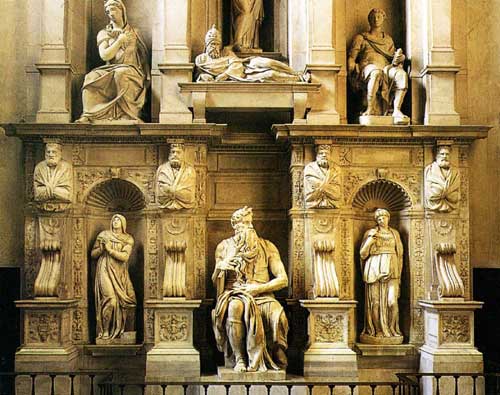
Old Saint Peter's Basilica
It is quite easy for students studying Rome to forget that the city ever fell. There are so many rich events to be discussed in regards to this ancient city. From the founding myths of Romulus and Remus, to the brutality and extravagance of Emperors like Nero, the Colosseum, and the art produced in the Renaissance. It is so easy to glaze over the decay of classical Rome and concentrate on the exciting and enlightened ages around it.
However, Ingrid D. Rowland's article "Cultural Introduction to Renaissance Rome" emphasizes the ruins to which the Papacy returned to from Avignon, France. Petrarch is quoted on what he saw during the period of Rome's decay after it had fallen to the Visigoths and Vandals,
"Although when I first...went to Rome, almost nothing was left of that old Rome but an outline or an image, and only the ruins bore witness to its bygone greatness, nonetheless, among these ashes there were still some noble sparks; but now the ash is long extinguished and grown cold."
According to this quotation, Rome appeared to be without hope of ever being great again. It appears that about this, Petrarch was incorrect. When the Papacy returned to the land where Christianities many founding events took place, Rome was much the same as it had been described by Petrarch. The city was still in ruins, among which the residents had made seemingly temporary housing by comparison. However, with the clergy came people and businesses to serve it. As economics increased, so did the effort to rebuild and reclaim the glory of Rome.
Much of this effort was in new construction, mostly churches. These of course were commission by popes, or occasionally by cardinals who were competing for the most impressive projects. It is obvious that the architects were inspired by the ancient Roman classicism around them, however their veneration did not prevent them from looting the ruins for materials to build with, such as the case of the Colosseum who's materials were taken and reused for the palazzi.
Another significant portion of Rome's progress from the dark ages to renewal of glory was the opportunity of a humanist education. Although, as I discussed in my first posting, humanist educations were not as free and available to everyone as we commonly think today, it did allow for those who came from wealthy families (but with tarnished circumstances) to progress and create a name and wealth for themselves. The architect Alberti was the son of a Florentine banker, however he was illegitimate; his humanist education allowed him the ability to gain the wealth that he could never inherit from his father. Many other men who belonged to the humanist practice were eloquent and prided themselves on their oratory skills, as well as gaining knowledge from classical Roman texts. While they were often questioned by christian preachers on grounds of morality, the humanists argued that God's "method of creation" was reflected in these ancient Roman author's works.
With this renewed emphasis the Vatican Library was established by Nicholas V, and was decorated with frescos by Fra Angelico. This illustrates quite well how popes would erect a building of significance and power, whether it be a library or church, and then proceed to commission art works for these new constructions. Leaving behind a large, beautiful, and frequently dominating monument for others to remember them by mimics the practices of classical Roman Emperors constructing baths, and other forms of entertainment as there legacy.

A great example of this is Saint Peter's Basilica. Pope Julius II, a fiery man who also had a great love for art and commissioned much of it, condemned and tore down the Old Saint Peter's Basilica (shown above). He commissioned Bramante to design and construct the replacement, which would be more grand, and would have two main roads leading straight to it. Within the new Saint Peter's Pope Julius planned on having his tomb constructed in the center, right above the resting place of Saint Peter. This was to be designed and decorated by Michelangelo, although it was never finished, the sculptures are quite stunning.

Not long after Pope Julius II's death did the extravagant construction and commissions slow. While they were not torn down by later Pope's who disapproved of using one's power in such a way, there has yet been such a surge in monumental, classicized art.
Well informed response, and very good to illustrate your ideas so well with the two images of St.Peter's. I note that Petrarch is a contemporary with the "Babylonian Captivity" and had moved to Avignon. Now read Partridge for a different take on Rome of this period . . .
ReplyDelete